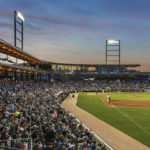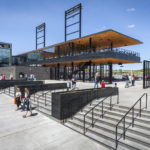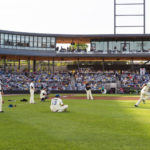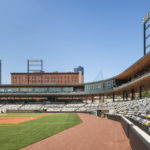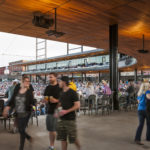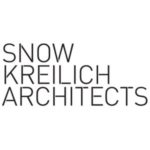CHS Field: Greenest Ballpark in America
Project's Summary
From Brownfield to Ballpark: CHS Field in St. Paul
Snow Kreilich Architects, Ryan Architecture + Engineering, and AECOM have collaborated to design a unique baseball park that has become a new and dramatic culmination to Downtown St. Paul’s 5th Street. The CHS Field creates a green space in the city that is not just a building, but a park with a 360-degree walkway that allows patrons to navigate the entire field. The park is embedded into the city and connects St. Paul’s vibrant Lowertown arts district of 19th-century warehouses to the natural amenities of riverfront parks and trails.
Design Strategy: The Greenest Ballpark in America
The park is designed to be the greenest ballpark in America, and much of what is sustainable is invisible. For instance, a 27,000-gallon rainwater harvesting system will provide 25% of the irrigation needs, and St. Paul’s District Energy, which is run with biofuels, will heat and cool most of the interiors of the ballpark. The former Gillette warehouse, which was one of the ten most contaminated sites in the Twin Cities, was 95% recycled in crushed gravel for the building and field base or reused in the retaining walls and pier foundations.
Neighborhood Cultural Identity
The neighborhood’s cultural identity is built on the creativity of the artists, its diversity, and its social energy built on its events, restaurants, farmers market, and active public places. Similarly, the ballpark is conceived to appeal to a diverse population, and the social experience during a game is enhanced by providing open seating opportunities in the park. The park includes an art courtyard behind home plate, outdoor terraces at the suite level, a drink rail in right field, berm seating and park space in left field, and a large terrace off of Broadway. The ballpark will be the home of the St. Paul Saints, a leader in reinventing sports entertainment, and Hamline University will likewise call the park home. The City, which owns the park, will host a number of cultural events. It is anticipated that the ballpark will attract 450,000 visitors a year.
The Visual Connection to the Surrounding Warehouse District
To preserve the rich visual connection to the surrounding warehouse district, the seating bowl and playing field are depressed into the natural topography of the site, and concourse amenities are pushed back into the hillside. The suites, club, and press box float above the concourse on a light steel frame. The underside of this structure is clad in a continuous soffit of western red cedar. The design strategy is evocative of the timber and steel of the surrounding building’s interiors yet provides a light and porous counterpoint to the weight and mass of the surrounding warehouses.
In conclusion, the CHS Field project is a testament to the power of collaboration and innovation. The architects have created a space that is not only beautiful but also sustainable, and that connects the city to its natural surroundings. With its open seating opportunities and diverse social experiences, the ballpark is a true reflection of the neighborhood’s cultural identity. From brownfield to ballpark, CHS Field is a remarkable achievement and a source of pride for the St. Paul community.
Read also about the Elevate Your Living: Evergreen Apartments - Nature meets Modern Living project
